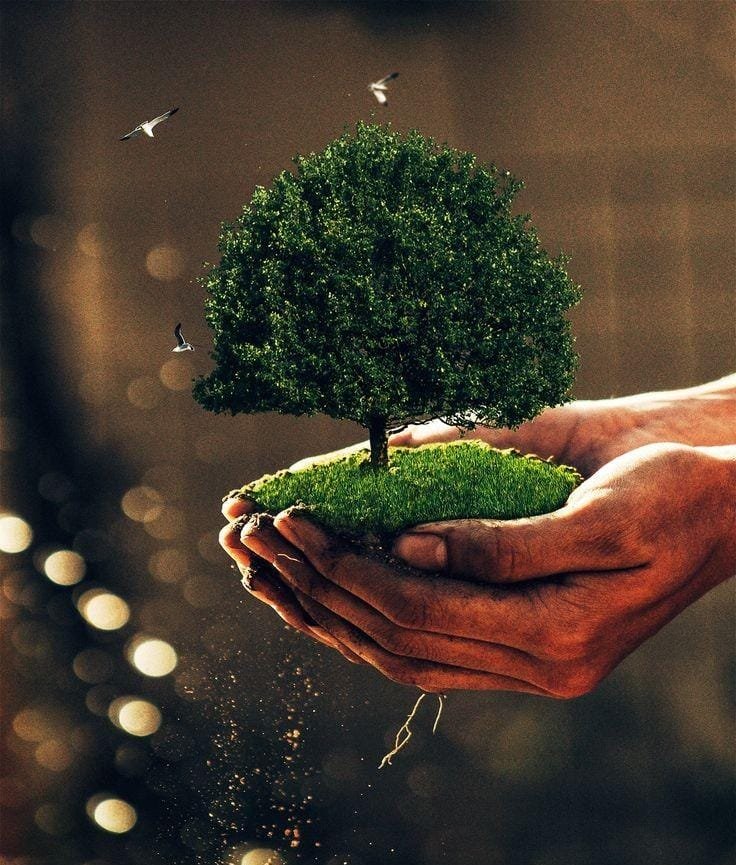Sustainable development refers to the process of meeting the needs of the present generation without compromising the ability of future generations to meet their own needs. It seeks to strike a balance between economic growth, environmental protection, and social equity, ensuring long-term progress and development.
1. Concept of Sustainable Development
Sustainable development is not limited to economic growth alone. It also involves preserving natural resources and protecting the environment while ensuring human welfare through social equity and reducing economic disparities.
It strives to balance three main dimensions: environmental, social, and economic.
The concept is closely linked to the environment, focusing on the sustainability of natural resources and reducing pollution, while simultaneously fostering social development for a fair distribution of wealth.
2. Dimensions of Sustainable Development
A. Environmental Dimension
Environmental sustainability is one of the key components of sustainable development. It involves protecting ecosystems, preventing environmental degradation, and maintaining biodiversity.
Resource Management: It requires the responsible use of natural resources like water, energy, and forests. This includes using renewable energy, reducing fossil fuel consumption, and promoting energy efficiency.
Pollution Reduction: It includes reducing air, water, and soil pollution through clean technologies, waste reduction, and encouraging recycling.
B. Economic Dimension
Sustainable economic development focuses on achieving growth without depleting natural resources or damaging the environment.
Green Economy Investment: This involves using low-emission technologies and developing sustainable industries, such as organic farming and renewable energy.
Efficiency Improvement: It refers to maximizing the use of available resources and minimizing waste in production processes, whether in industry or services.
C. Social Dimension
Sustainable development requires improving the quality of life for all members of society, including vulnerable groups such as women, children, and the elderly.
Social Equity: This involves providing access to opportunities like employment, education, and healthcare for everyone, reducing economic inequalities.
Fair Distribution of Resources: Ensuring that the benefits of development are distributed fairly and that all individuals have the opportunity to improve their lives.
3. Sustainable Development Goals (SDGs)
In 2015, the United Nations adopted 17 Sustainable Development Goals (SDGs) as part of the “2030 Agenda.” These goals aim to balance the three dimensions of sustainable development.
Key SDGs include:
End Poverty: Improve the economic conditions of those living in extreme poverty.
Ensure Quality Education: Provide inclusive and equitable quality education and promote lifelong learning.
Achieve Gender Equality: Ensure gender equality and empower all women and girls.
Good Health and Well-being: Ensure healthy lives and promote well-being for all ages.
Affordable and Clean Energy: Ensure access to affordable, reliable, sustainable, and modern energy for all.
Decent Work and Economic Growth: Promote inclusive and sustainable economic growth, employment, and decent work for all.
Climate Action: Take urgent action to combat climate change and its impacts.
Life Below Water and Life on Land: Protect and restore the use of oceans, seas, and marine resources, as well as terrestrial ecosystems.
4. Challenges to Sustainable Development
Climate Change: Climate change is one of the most significant challenges to sustainable development, leading to environmental threats such as rising temperatures, rising sea levels, and an increased frequency of natural disasters.
Depletion of Natural Resources: Overuse of resources such as water and energy may lead to shortages in the future.
Poverty and Inequality: Many regions continue to face extreme poverty, and many people lack access to basic needs like education and healthcare.
Economic Transitions: Shifting from an economy based on natural resources to one based on technology and services requires significant changes in policies and the global economy.
5. Sustainable Development in Practice
Business and Environmental Practices: Many companies are adopting environmentally friendly practices such as reducing carbon emissions, using recyclable materials, and improving environmental transparency in their reporting.
Technology and Innovation: Technology plays a vital role in achieving sustainable development by providing innovative solutions for renewable energy, sustainable agriculture, and clean technologies.
Investing in Local Communities: Focusing on local community development by supporting small and medium-sized enterprises (SMEs) and improving social and economic conditions.
6. How to Contribute to Sustainable Development
Education and Awareness: It’s essential to raise awareness about sustainable development and its benefits at both the local and global levels.
Responsible Resource Use: Individuals can contribute by reducing waste, conserving energy, and using resources efficiently, such as reducing water consumption and choosing renewable energy sources.
Support Sustainable Policies: Support government policies that promote sustainable development, such as encouraging the use of renewable energy and improving public transportation systems.
Conclusion
Sustainable development is not just a choice but a necessity to ensure the well-being of future generations. By integrating the environmental, economic, and social dimensions, sustainable development can help create a balanced and fair world. Despite the many challenges, progress toward this goal requires collective commitment from governments, businesses, and individuals to create a better, more sustainable future for all.




